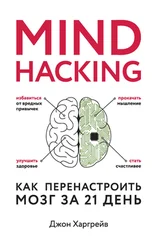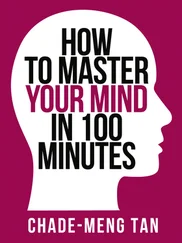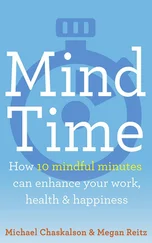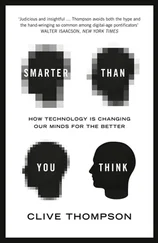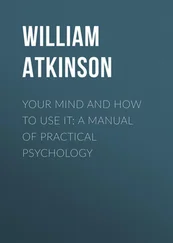A Diet of the Mind
The brilliant mathematician John Nash, who is the subject of the Hollywood movie A Beautiful Mind (as well as the book of the same name), is what the experts call “really good at math.” He won the 1994 Nobel Prize in Economics for his work in the field of strategic decision making known as “game theory,” and his work is used today in everything from artificial intelligence to military strategy.
Nash also suffered from paranoid schizophrenia. While his mental illness developed over many years, it was not until he was due to be promoted at MIT that his full-blown symptoms erupted. (He told the head of a rival department that he would not be able to accept the position because “I am scheduled to become the emperor of Antarctica.”) 7As his illness deepened, he spent time in and out of various mental institutions, suffering from “dream-like delusional hypotheses” 8such as being persecuted by the federal government, aliens trying to contact him through the New York Times , 9and the conviction that he was the Messiah.
What happened next is even more remarkable. Without the aid of medication, he gradually retrained his thinking using what he called a “diet of the mind.” 10In other words, he was still tempted by the delusional patterns, but he intentionally rejected them. He describes it as an ongoing habit of choosing the right thoughts, more “like a continuous process rather than waking up from a dream.” This mastery of his mind—this ability to disengage from his own mental movie —led to tremendous career success later in life, including the John von Neumann Theory Prize, the Nobel Prize, 11and the 2001 Academy Award for Best Picture (he should get credit for that one, too).
You are not your mind.
This is easiest to observe during “mental downtime,” like driving or doing the dishes. When you’re doing things that don’t require a lot of concentration, your mind goes into overdrive, using those spare CPU cycles for projecting the movie.
Sometimes the movie is a feel-good family comedy: funny memories, pleasant thoughts, hopeful dreams. In these times, you see why the mind can be our best friend.
Sometimes the movie is a depressing English period drama: melancholy thoughts of despair, depression, or hopelessness, often involving tuberculosis. In these times, you see how our mind can be our worst enemy.
Your mind spends most of its time projecting into the future (plans, dreams, fears), or reminiscing about the past (memories, regrets, nostalgia). Frequently clips from the same movies play over and over:
> “Why did I say that? I’m such an idiot.”
> “I don’t know why I even try. I will never be able to do it.”
> “If I don’t watch every penny, I’ll end up in poverty.”
> “Does he really love me? Even though we’ve been together for so long, I’m still not sure.”
> “My kids are going to get injured, I just know it.”
> “Everyone at work is talking about me behind my back.”
> “I hate him! I hate him! I hate him!”
> “This funeral would be a lot more fun if I were high.”
We can all add our own mental movie clips to this list. It’s difficult to reason with these kinds of habitual thoughts; they seem to just appear from out of nowhere. That’s the way the mind movie works. Later, we’ll learn how to begin directing this movie. For now, just try to become aware that you’re watching it.
User vs. Superuser
Anyone who’s spent time on a computer network has seen an error message like this:
Which really means:
In simple computer systems, everyone has access to everything. But quickly this becomes unwieldy and dangerous: if you give a typical user access to the entire customer database, before you know it, he’s accidentally erased 10 million names. (“Sorry, I was just cleaning my keyboard.”) It reduces problems if people have access only to what they need.
Typically, the people who know what they’re doing will maintain what we’ll call “superuser” access, making sure the ordinary “users” have limited power. You can’t view everyone’s email account, only your own—but superusers can. You can’t see everyone’s files in the cloud, only your own—but superusers can.
This is why computer hackers always want to have superuser access. We call this “root” access or “rooting,” because you’re at the root of the system. This is where the power is. Root in, and everything is at your command.
As a teenager, I used to attend a monthly computer club where dozens of computer enthusiasts would meet up to pirate thousands of dollars’ worth of computer software while eating Hostess Zingers. (Ironically, this early version of The Pirate Bay was held in the basement of a church.) This was long before the Internet, so software was hard to find, and we would spend hours copying programs on 5 1/ 4floppy disks until our drives would overheat; then we’d trudge home.
One night a stranger showed up. He said he was visiting from California, and he did look surprisingly tanned and fit, completely out of place among our pale, neck-bearded folk. He sidled over to me and asked, “What you got?”
I went through my entire list of games. “ Jumpman .”
“Got it.”
“ M.U.L.E. ,” I responded. “ Space Taxi. Zork I. Zork II. Zork III. ”
“Keep going.”
“ Zork Zero .”
“Anything else?”
It was crazy. No one had all those games. “How about Pogo Joe ?”
“ Pogo Joe ?” He lit up. “I’ll take it.”
As we were copying the game, he asked, “You have Blue ?”
“I’ve never heard of it.”
“Check it out.” He pulled out a disk with a piece of masking tape across the top. One word was written on it: BLUE.
“What’s that?” I asked.
“It lets you make free phone calls.”
In the days before digital phone systems, the legendary “blue box” was a piece of hardware that simulated a tone made by the phone company’s analog switching relays, allowing you to make long-distance phone calls for free. (Before they invented Apple Computer, in fact, Steve Jobs and Steve Wozniak got their start building and selling blue boxes; one of Wozniak’s original blue boxes is enshrined at the Computer History Museum.)
Blue was a software-only blue box: you called the phone company’s information line, then held your phone receiver up to the computer speaker. Blue would blast out the magical 2600 Hz tone, putting you into “superuser” mode.
As it happened, I lived in Ohio and was dating a girl in Nebraska (if that doesn’t prove my geek cred, I don’t know what does). Once I got Blue , I went insane with long-distance phone calls. I was untouchable! I spent an entire month in blissful superuser mode, calling her multiple times a day for free . . . until my dad got the phone bill.
“SIXTY-THREE DOLLARS IN INFORMATION CALLS?” he screamed. I still remember him waving the phone bill in the air, as well as the exact amount of the bill. “SIXTY-THREE DOLLARS?” Apparently Blue wasn’t completely free: you still had to dial up the information line, which cost fifty cents per call. I had made one hundred and twenty-six information calls in one month.
“Blue boxing” is similar to the concept of mind hacking: we are trying to log out of our usual “user” mode and log back in as “superuser” to unlock special powers and features. We’re trying to trace our mental system back to its roots, where we can alter the code that controls our life.
Easy to understand, difficult to do. It’s as if the mind, like an insecure IT overlord, wants to keep us locked in “user” mode. Even when we manage to get into superuser mode temporarily, before we know it, we’re locked out. We realize that somehow we’ve slipped back into regular user mode, caught up in the content of the mind again. We’ve slipped back into the movie.
Читать дальше
![Джон Харгрейв Mind Hacking [How to Change Your Mind for Good in 21 Days] обложка книги](/books/404192/dzhon-hargrejv-mind-hacking-how-to-change-your-min-cover.webp)


